From 1945, the year it was founded as Saab AB, to 2012, the year the peeps at Spyker sold the carmaker to NEVS, Saab manufactured lots of timeless machines. This is a teeny-weeny story about six of the most significant Saab cars ever made, as chosen by the editorial team of autoevolution.
Before anything, it should be mentioned that NEVS continues to make the 9-3. NEVS doesn’t have the right to use the name, nor the Griffin logo. The latter, however, continues to be used by truckmaker Scania.
Be that as it may, the automobile division of the Saab Group will always be remembered for thinking outside the box. You could even say that Saab is the Swedish equivalent to Lancia. On the surface, Saab may appear to be a more adventurous automaker than Volvo. But to be frank, Saab is an oddball that, in its madness, produced an assortment of high-performance cars that also happen to appeal to family drivers.
Having said these, let’s take a trip down memory lane. Here goes:Ursaab (1947)
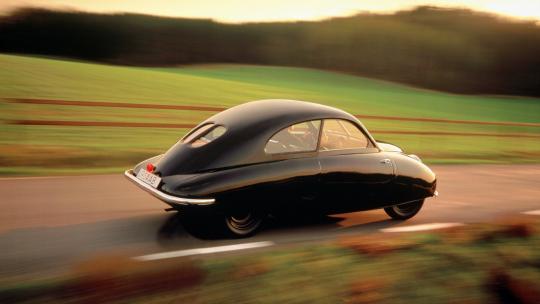
Genesis is the word that best describes the Ursaab. Also known Project 92 or X9248, Saab built four prototypes of the thing. What Saab had learned from its first effort as an automobile manufacturer morphed into the Saab 92, the first production vehicle from the Swedish carmaker.
“Why did they go with Project 92 and not, well, anything else?” Ah, good question! The answer to it is that the Trollhattan factory in Sweden built two passenger planes during WW II, christened 90 and 91, respectively.
Because the Swedish market was awash with motorcycles, trucks, and large cars after the closure of World War II, Saab AB decided that it would be best to come up with a small, affordable car. This, then, was the niche Project 92 and the subsequent Saab 92 were gunning for.
Before full-scale production of the Saab 92 started in December 1949, the Ursaab prided itself on a drag coefficient of Cd 0.32. To put that figure into perspective, that’s the same as a Ferrari F40. That’s mighty impressive for 1947. Heck, it’s even more impressive if you take into consideration that the 16 engineers behind the Ursaab had no prior experience in designing cars and only two of them had a driving license.Saab 93 (1956 – 1960)
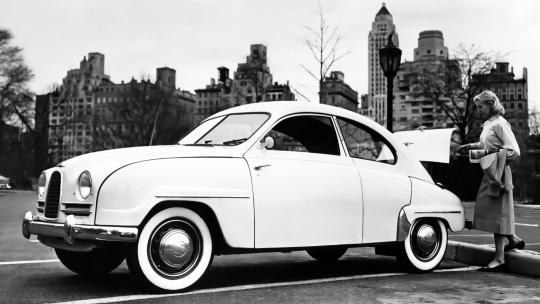
After amassing more than 530,000 kilometers (330,000 miles) with the Ursaab, the Swedish automaker started producing the Saab 92 in 1949. The 93 dropped by in 1956 and, for what it’s worth, it’s a major update over the Saab 92. Other than it being superior to its predecessor, the 93 is also worthy of being remembered chiefly because it was the first Saab to go the way of the export through official channels.
Saab announced the Ninety-Three in August 1955 amidst speculation regarding a three-cylinder two-stroke engine. This engine shouldn’t be confused with the transversally mounted unit based on a DKW design that motivated the 92. The 93's engine is a different design, boasts 748 cc instead of 764, and, for a change, it is mounted longitudinally.
Until model year 1967, the second type of two-stroke engine found its way under the hood of the 93, the first two Sonett generations, 95, 96, GT750, Formula Junior single seater, and the Quantum prototype racers. To properly understand what makes this little engine so great, just type “Saab two-stroke” in the YouTube search bar.
When all is said and done, the Saab 93 and the two-stroke three-banger were a match made in heaven. Believe it or not, rally-prepped 93s won the Finland Rally (1957) and the Swedish Rally (1959). As if that wasn’t impressive enough, the 93 also finished 1st in its class in the 1957 Mille Miglia and 2nd in its class in the 1959 24 Hours of Le Mans.Saab Sonett (1955 – 1974)
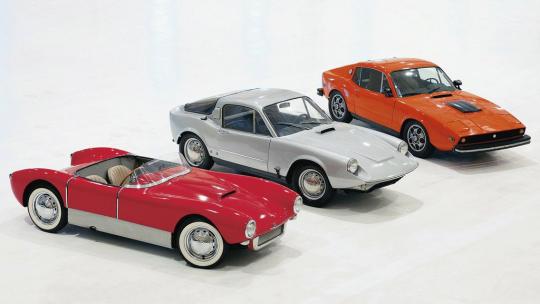
Ah, the Sonett! Legend has it engine developer Rolf Mellde and three of his buddies designed the first incarnation of the Sonett in a barn. With a budget of 75,000 Swedish kronor, the four men managed to deliver the Sonett just in time for the 1956 Stockholm Motor Show. Amusingly, the name comes from a Swedish phrase that translates to “so neat they are.”
The Sonett I is the red-painted vehicle in the featured photograph. It sort of looks like a hybrid between a C1 Corvette and the AC Ace, doesn’t it? If you look even closer, you’ll observe that the Sonett I is RHD and has its gear lever located to the right of the steering wheel, just like a Ford GT40 has. Sweden, however, drives on the right, so what’s the catch?
The catch is that all six units of the Sonett I were built before September 3, 1967, the day Sweden switched to driving on the left-hand side of the road as a result of the Swedish driving side referendum of 1955. Based on design concepts from the aeronautical industry, the Sonett I weighs just 600 kilograms (1,323 pounds). The aluminum chassis, for example, tips the scales at just 70 kilos (150 pounds). Impressive stuff, alright!
As for the Sonett II and Sonett III, Saab developed these machines with us mortals in mind. Also known as the Saab 97, the Sonett II bid farewell to the two-stroke engine in 1967, when the 1,498 cc Ford Taunus V4 was adopted. The final iteration, dubbed the Sonett III, weighs just 880 kilos (1,940 lbs) and can hit 103 mph (165 km/h) thanks to its 1.7-liter V4 mill. Saab 99 (1968 – 1984)
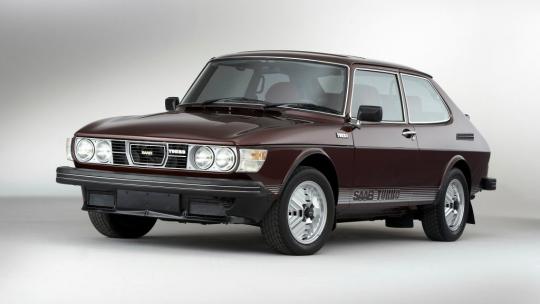
The ‘70s is the decade when Saab really took off as a manufacturer [no aeronautical pun intended]. After hitting the 500,000th car milestone in 1970, Saab celebrated the one-millionth car to come off the line at its Trollhattan plant in January 1976. The Saab 99 was one of the most, if not the most momentous Saab of its epoch, for a multitude of reasons.
Compared to its forerunners, the 99 was a larger car, fitting nicely in the compact executive segment. Under its hood, the Saab 99 hides a four-stroke four-cylinder engine designed by Triumph. All things considered, the carbureted unit was half of the V8 Triumph produced in the 1970s.
Saab equipped 48 units of the 99 with the Triumph-developed V8, yet that didn’t go through. Instead, Saab introduced the 99 Turbo in 1978, boasting a 2.0-liter B series engine and a Garrett turbo. The first force-fed Saab produced 143 horsepower (145 PS) and could hit 62 mph (96 km/h) in 9.2 seconds. The top speed? Just shy of 124 mph (200 km/h).
In consequence, the Saab 99 Turbo was an instant hit when it went on sale and immediately became an instant classic. The final reason why the Saab 99 is worthy of being inducted into the Automotive Hall of Fame is the fact that this is the last model Saab campaigned as a rally car. With Stig Blomqvist behind the wheel, the Saab 99 EMS and Saab 99 Turbo won the International Swedish Rally in 1977 and 1979.Saab 900 (1978 – 1994)
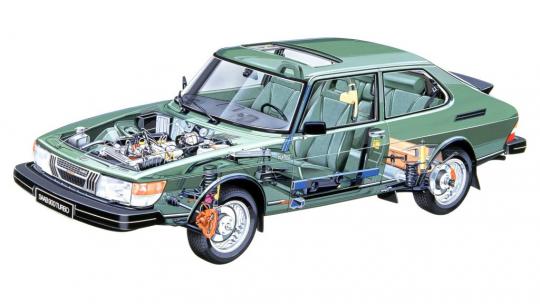
Based on the 99 and developed with the American consumer in mind, the Saab 900 was the misfit of the compact executive car during its era. Why’s that? Firstly, the engine delivers its power from the crank at the front. By way of explanation, the engine is installed backward.
Then there’s the transmission, which is conjoined to the bottom of the engine, a technical artifice inspired by the original Mini. Up front, the Saab 900 brags with double wishbone suspension. From a design standpoint, the extremely curved windshield provides great visibility.
Once you step inside, the most impressive shenanigan is that all the controls are placed on the dashboard according to their frequency of use. That’s forward thinking for 1978, the year Grease is released to worldwide acclaim and Spain becomes a democratic state.
There a lot to like about the Saab 900, regardless if you’re an out-and-out gearhead of Mr. Sensible Pants in the market for a nice car. Other than what was presented in the paragraphs above, the Saab 900 also set the stage for the cabin air/pollen filter, an essential consumable for modern cars. On the other hand, Nash Motors was the first to develop the disposable air cabin filter for passenger vehicles, way back in 1938.Saab 9-5 (2010 – 2011)
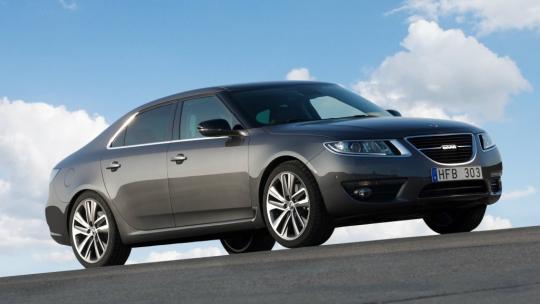
The 2010 to 2011 Saab 9-5, internally referred to as the YS3G, will be remembered as the last heartbeat of an already diluted carmaker. By diluted, I am referring to the involvement of General Motors. Ever since the second-generation 900, all Saabs were built with GM underpinnings.
The second-generation Saab 900, for example, was an Opel Vectra in drags. As fate would have it, the 900 NG helped Saab earn a profit in 1995 for the first time in seven years. From then on, though, everything went downhill for the Swedish manufacturer. The Saab 9-5, on the other hand, shares its backbone with the Opel Insignia, Buick Regal and LaCrosse, Cadillac XTS, Chevrolet Malibu and Impala. Dreary cars, to be brutally honest. The thing is, the Saab 9-5 is far from dreary.
Not does it only follow the turbocharged tradition that put Saab on the map, but the second generation of the Saab 9-5 is critically acclaimed for being a better car than the sum of its parts. The Haldex all-wheel-drive system, unmistakably Scandinavian design, the aircraft-inspired cabin, the real-time damping control, an extremely rare wagon body style, there’s a lot to like about the 9-5.
For Saabophiles, this is one of the most attainable collector’s items out there. For people who know better, the Saab 9-5 is inferior to the Audi A6, BMW 5 Series, and Mercedes-Benz E-Class. I don’t want to know better because the 9-5 catches me off-guard every single time. I mean, who needs Apple CarPlay when you have green-lit dials and a button that reads NIGHT PANEL and kills all interior illumination save the speedo?
The 2010 to 2011 Saab 9-5 is far from perfect, but it’s the perfect car to stand out in the crowd.








